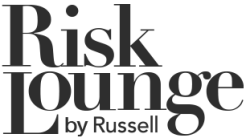
The US Government has been told the appetite of the commercial insurance market to underwrite terrorism risk in the United States is down to the involvement of the government as the reinsurer of last resort and any change would see exodus of capacity.
Broker Aon has submitted it response over the debate as to whether the Terrorism Risk Insurance Program Reauthorization Act (TRIPRA) of 2007, will be renewed prior to its proposed end in 2014.
Aon said: “The majority of the commercial insurance market has made it clear that it will revert to its pre-TRIA [The original U.S. government terrorism programme brought into being in 2002] stance upon TRIPA’s expiration at the end of 2014, and exclude terrorism risk from coverage due to continued limitations on modelling and restrictions on establishing a viable reinsurance market for this risk.”
The $500 million of estimated insured Thailand loss flowing from recent political violence events is illustrative of the challenges facing the property terrorism insurance market, said the broker with the loss alone representing a sizable portion of the premium generated annually by the global standalone terrorism underwriters.
"The loss events in Thailand demonstrate that terrorism remains a global risk with the potential to impact available capacity for U.S. risks, and we hope the U.S. Treasury and all parties interested appreciate the vital role TRIA plays in sustaining affordable terrorism insurance coverage," said Aaron Davis, Managing Director of Aon Risk Solutions' national property practice. "While outstanding progress has been made in the private sector, individual companies and our economy as a whole will not survive a catastrophic terrorism event without a reliable backstop in place."
Despite the nearly 70 percent growth since 2006 of standalone terrorism market per-risk capacity for standard commercial all-risk property markets, a gap of nearly $10 billion remains in the amount of per-risk capacity when compared to the all-risk property coverage available. Standalone terrorism coverage remains an important solution for businesses, but does not represent a means for replacing TRIA's $100 billion of annual aggregate capacity.
"The commitment of commercial insurance carriers to terrorism coverage in the U.S. is directly correlated to the existence of TRIA and its mandatory coverage," added Mr Davis. "When large losses occur, we expect markets to shy away, translating to a drop in the available capacity of terrorism coverage as its price skyrockets. If TRIA disappears, $100 billion of terrorism capacity will not emerge from the private markets to replace it.
"Terrorism risk insurance coverage pricing remains higher for domestic versus foreign risks, due to the continued perception that the U.S. remains a target for both single-interest domestic and global terrorist groups."
Mr Davis continued. "TRIA's success rests largely on the lack of terrorism-related losses in the U.S. and the continued requirement that carriers offer terrorism risk coverage for most commercial property and casualty exposures in the U.S."





